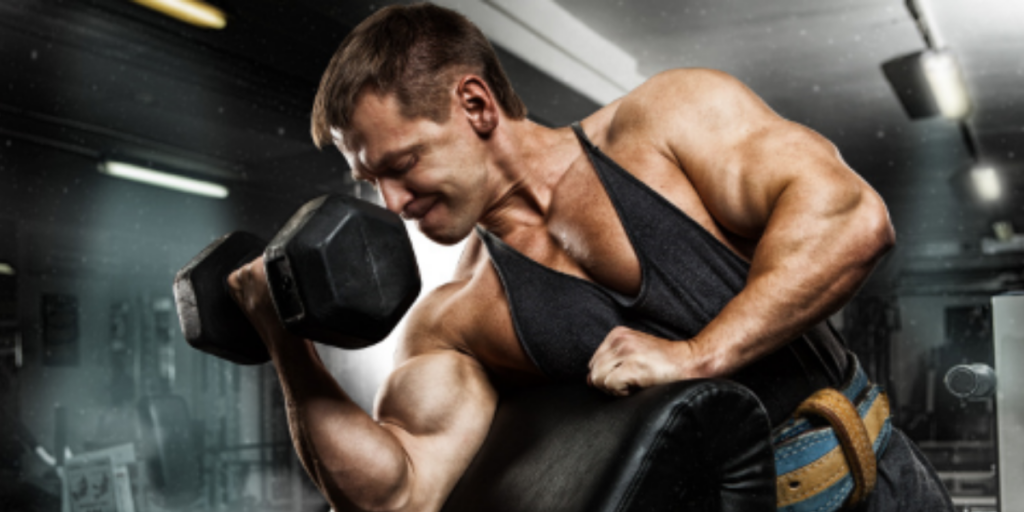No products in the cart.

Bodybuilding and CrossFit; two different styles of workouts designed to improve fitness levels. Bodybuilding has been around since the late 1800’s and has a long and colorful history. CrossFit is the new kid on the block, having existed as a fitness industry buzzword since 2000. The two training methods are markedly different, but do have a few similarities, which raises the question: which is better for developing overall fitness?
Is it better to be a muscle head or a kamikaze? Disciples of each system argue their individual strong points, so let’s break them down and see how each one shakes out.
Bodybuilding and CrossFit
The foundation of a bodybuilder’s training centers around creating muscle hypertrophy to get as big as possible. Aesthetic appearance is the primary goal, with the ultimate vision of “looking good on the beach” in mind. Individuals following a bodybuilding program tend to develop larger, thicker muscles than those using other training modes and may already be genetically predisposed to a mesomorphic body type. Workouts are designed to specifically target the muscle groups that are most visible when on display. Resistance training with high volume sets of isolation movements are the norm, and sessions often last well over an hour. Low to medium intensity aerobic exercise acts as a supplement to metabolize excess body fat and promote precise definition. Strength is not necessarily the main purpose and is frequently a byproduct of the rigorous work put in to gain weight and maximize size.
Referred to by some enthusiasts as the “sport of fitness” CrossFit is an outgrowth of police and military physical training. The prime focus is on performing full-body functional movements to build broad-based fitness. CrossFit takes place in a group setting within a specialized facility or “box.” Training sessions are either short, highly intense eight to twenty-minute Workout of The Day (WOD), or regular group classes lasting up to an hour. CrossFit training is rigorous as well, with workouts tailored to completing as many exercises and reps of each as possible in a given amount of time. CrossFit instructors are present during each session, coaching proper technique and offering encouragement. Lean, ripped bodies come with consistent training, and gaining muscle bulk is possible for people with the right genetics.
Bodybuilding and CrossFit do share some similarities. Both modes produce positive changes in body composition. Each combines the elements of resistance and cardiovascular training to varying degrees which fires up fat metabolism to get that lean, hard appearance. Look at the before and after pictures of men and women who have dedicated themselves to consistent training for the respective disciplines. The differences in muscle size are evident, and there is now a ripped core replacing that old spare tire. Following the right diet plan is repeatedly emphasized for each because it dictates performance as well as the ability to get and stay lean. Sticking with a high protein, low fat intake for both is stressed. Carbohydrate intake for bodybuilders varies, depending on their competitive cycle, while CrossFit usually goes low-carb. Supplements play a pivotal role for both, helping boost muscle repair and training recovery.
Bodybuilding and CrossFit differences boil down to the question of form vs. function. The knock against bodybuilding is that it’s mainly for appearance purposes, with no real goal of developing functional strength. Some bodybuilders aren’t as strong as they look because of the mirage of size. For those reasons, much of the public have viewed it to be somewhat narcissistic. However, training methods are beginning to change, with a reduction in workout time and a greater emphasis placed on functional strength. Designed with function in mind, CrossFit’s core components of cardiovascular endurance, strength, stamina, flexibility, power, speed, agility, balance, coordination, and accuracy take a comprehensive approach to fitness. Exercises are multi-joint movements done at maximum speed, causing a significant anaerobic effect. CrossFit devotees are likely to carry less muscle bulk, as their training is more varied than bodybuilding. The range of movements done in CrossFit sessions may also better enhance flexibility. CrossFit opponents cite grave concern over injury risk relating to training quantity of the more complex movements. Olympic lifts, in particular, are designed to develop power and should be performed at a low volume before the onset of fatigue.
Bodybuilding and CrossFit are both proven and effective ways to improve fitness levels. These two options come down to each person’s individual goals. What’s more important, developing size and definition to its fullest potential, or having the strength and endurance to pursue a variety of physical activities? The choice is yours. Focus first on developing a general strength and aerobic base, then follow the approach that will best meet your fitness needs.
